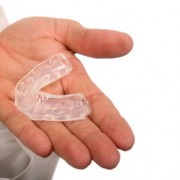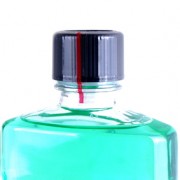How to choose the right toothbrush
 Where ever you shop, it’s safe to say the toothbrush isle is overwhelming and a little out of control. It might be tempting to go for the light up toothbrush, the superhero toothbrush, or 20 pack of tooth brushes (so that you don’t have to go down that isle for a while) but there is actually a lot more to the picking process. We spend over 1000 hours in our lifetime brushing our teeth, so it is important to know what to look out for when purchasing a brush. The most important factor is brushing twice a day and doing it throughly. Dr. Chauvin and his team want to make sure you have all the information to help make your smile bright and happy for years to come.
Where ever you shop, it’s safe to say the toothbrush isle is overwhelming and a little out of control. It might be tempting to go for the light up toothbrush, the superhero toothbrush, or 20 pack of tooth brushes (so that you don’t have to go down that isle for a while) but there is actually a lot more to the picking process. We spend over 1000 hours in our lifetime brushing our teeth, so it is important to know what to look out for when purchasing a brush. The most important factor is brushing twice a day and doing it throughly. Dr. Chauvin and his team want to make sure you have all the information to help make your smile bright and happy for years to come.
Types of toothbrush bristles
The most common types are Soft, Medium, and Hard. Most dentists recommend soft-bristled toothbrushes, and extra-soft bristled toothbrushes for anyone who has sensitive teeth or gums, or is recovering from a dental procedure. Some people simply prefer soft bristles. But many people who don’t have sensitive teeth or gums prefer firmer bristles because they believe them to be more effective for removing plaque and stains from the teeth, though that is not the case. Effective toothbrushing can be accomplished with soft and extra-soft bristles.
A hard toothbrush bristles do not necessarily equal cleaner teeth, but they can instead scratch your enamel and irritate your gums. Over time, this can cause gums to recede prematurely. Often people assume with a hard bristles toothbrush they are brushing more of the grim off, when in fact a soft bristled toothbrush does the best job.
Toothbrush sizes
A toothbrush with a small head is better than one with a larger head. No matter how big your mouth is a toothbrush with a small head can access narrow, inaccessible areas of your mouth. Most importantly, your molars. Angular placement of bristles on the head means you can clean teeth from all directions. This can help in prevention of plaque, which can accumulate if not cleaned on time.
Electric or manual toothbrushes
This part of picking the right toothbrush does not come with a wrong answer. If you are brushing the right way, for the right amount of time, and have no complaints with a manual toothbrush – then stick with that. On the other hand, if you have a hard time committing to oral health, have arthritis, or do not trust that you are brushing correctly the electric toothbrush might be for you.
Electric Toothbrush: These come with a ton of technology and features, electric toothbrushes provide the many oral health benefits. Some can even enable you to improve your brushing habits.
- Modes specialized for sensitive teeth or gum-massaging action
- Pressure sensors that let you know when you’re brushing too hard
- Very easy to use, all you need to do is place the toothbrush at a 45° angle and let the toothbrush do all the work.
- Studies have shown that electric toothbrushes do a better job of cleaning your mouth and removing plaque and gingivitis.
- More fun to use for children
- Built in timer that stops the toothbrush once two minutes are up
- Reminders to replace your brush head
- Rotating bristles
Manual Toothbrush: While ordinary toothbrushes don’t nearly provide the benefits and features of electric toothbrushes, the technology featured in their brush heads, bristles and handle designs can be quite advanced, for example:
- Crisscrossed, extra-long or multi-level bristles
- Polished or rounded bristle tips
- Textured bristles
- Easy to travel with
- No batteries or charging
- Inexpensive and often free whenever you make a trip to your dentist
- Cupped-bristle design for whitening benefits
- Ergonomically designed handles with special grips
- Tapered or angled brush head
- Gum stimulators
- Tongue cleaner pads
How often should you replace your toothbrush?
The American Dental Association recommends getting a new toothbrush or brush head about every three months. This is more because of the wear on the bristles rather than germs.
Bristle wear is the main reasons for replacing your brush, but they also harbor bacteria. If not cleaned properly, microscopic bacteria can live on your toothbrush. After time and several uses, toothbrushes will lose their effectiveness. Once the bristles begin to wear down, they are not as efficient at cleaning plaque and removing food and other debris from your teeth. It is also suggested that you change your toothbrush after any type of illness, such as a cold, the flu or any type of mouth sores.
You should always rinse your toothbrush after use and let it air dry in an upright position. If you are really worried about germs and bacteria, you can soak your toothbrush in alcohol, or mouthwash as it is also an antiseptic. Another option would be to dip your toothbrush in boiling water for 5 to 10 seconds. Never put your toothbrush in the microwave or the dishwasher, as both these methods will damage your brush.
When in doubt, talk to your dentist!
Your favorite Lafayette Louisiana dentist, Dr. Chauvin serves as a valuable resource for anything pertaining to your oral health. If you want to choose a toothbrush that targets your specific issues, you can ask your dentist for advice the next time you go in for a teeth cleaning.





